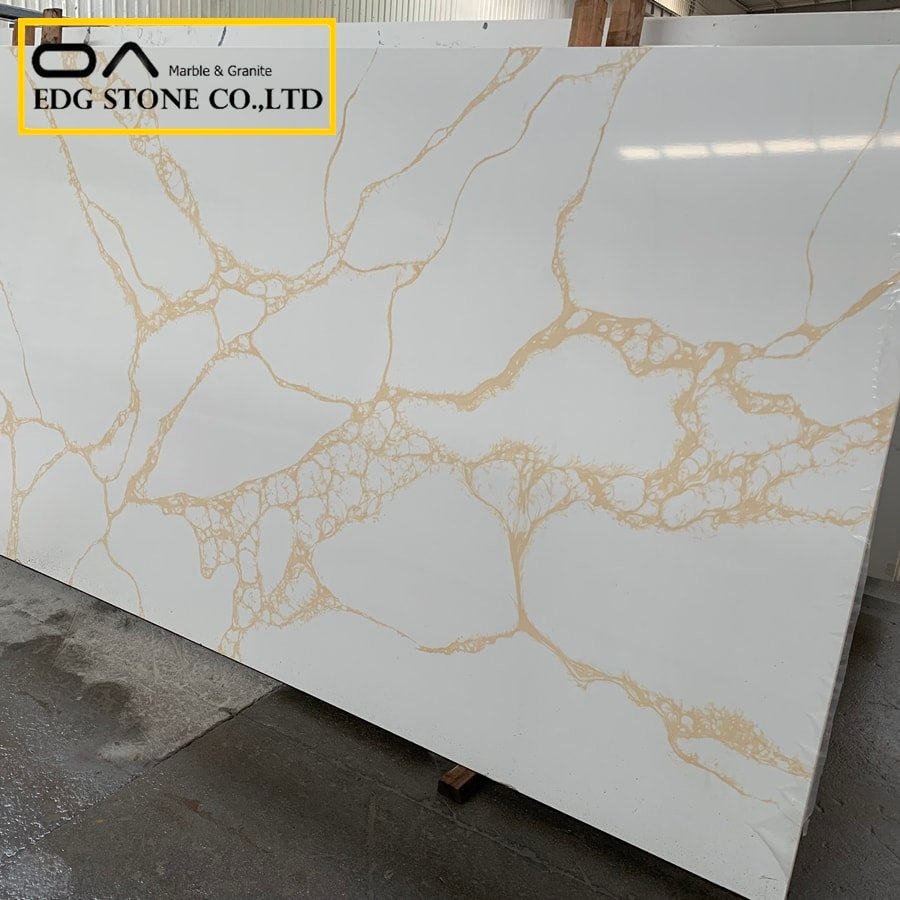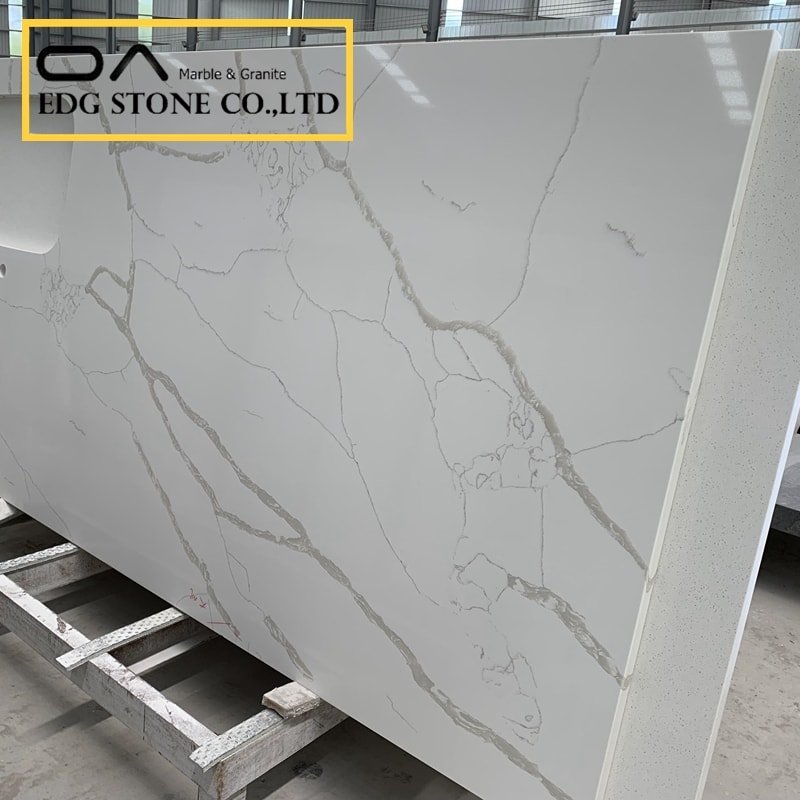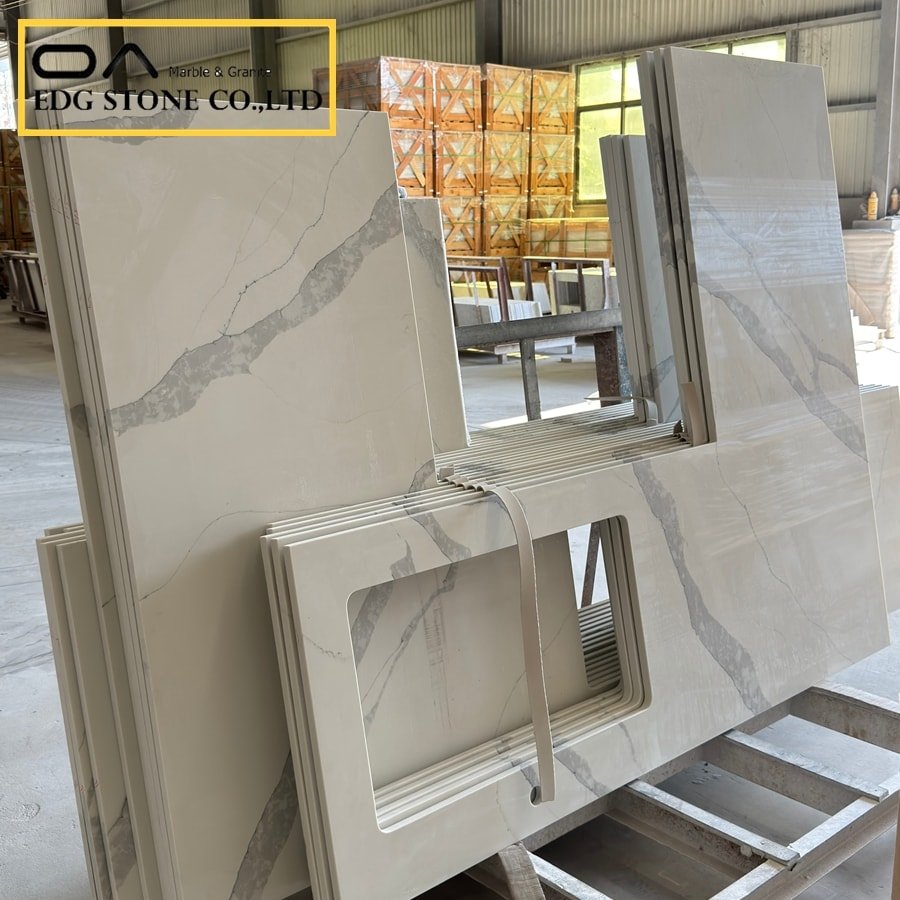The safety of synthetic stone has recently sparked attention due to the reconsideration of the risks associated with its silica. People have been looking for safer low-silica or silica-free surfaces to work with during their kitchen and bathroom design as the concern about risk-free materials grows. In light of this, the question arises: do these surfaces resolve the issue of concern surrounding the artificial stone materials? This article aims to address concerns surrounding the healthier surface materials watching over the surface treatment and zero silica slabs and the benefits and risks surrounding both over time.

Engineered stone Archives
Concerns Surrounding Silica in Aids in Built-Up Stoned
- Health Risks Induced By Silica Dust
First and foremost, silica, specifically crystalline silica has been deemed dangerous for industries that require the cutting, grinding, or polishing of materials as it contains the mineral, this remains true for engineered stone which has been high in silica and quartz, its primary ingredient as well. Besides this, other engineering materials roughly prepared with quartz concentrate also tend to have long-term exposure to silica and can damage the lungs and even lead to silicosis and cancer.
- Why Low Silica or Zero Silica Is Important
To counter these issues, there are silica-free benchtop bent alternatives. On the other hand, with the introduction of zero-silica slabs and low-silica quartz stones, consumers can experience the pleasure of crafted stones without the adverse effects of regular quartz surfaces, as the market is now supplying them with these substances. These advancements are transforming the trends in kitchen and bathroom designs providing a more effective and safe alternative.
The Emergence of Low Silica and Zero Silica Surfaces
Such surfaces which have been engineered without crystalline silica content are classified as zero-silica surfaces, for instance optimustone free silica quartz slabs are an excellent substitute for conventional quartz kitchen benches since they are completely safe to use and simple to mount. Without adding quartz to these slabs, the health problems associated with dust contact are solved, and concerns about beauty, strength, and durability are put aside.
- Advantages Of Silica Free Materials
The zero-silica quartz stone is a durable item that is resistant to scratches, stains, and heat damage. Silica-free benchtops retain the same stiffness and elegant finishes as silica and engineered stone, however, they do not emit harmful silica dust during working. These zero silica kitchen cabinets are more safe to use and look better than the other types Thus homeowners and builders are increasingly opting for these.
Silica in Surfaces, Materials and as Cut Stone: A Guide
A Development in the Safer Side of Surfaces.
As more manufacturers transition to silica-free options for their surfaces, materials, and worktops, the market sees a swift increase in the availability ofno-crystallinee silica materials. This shift away from crystalline silica is accelerating in areas where rules regarding exposure to silica dust are becoming more stringent. Materials such as quartz with lower silica and other options that are free of silica completely are not becoming a preference but rather a need as the consumer demand is increasing.
Are Low Silica Options as Durable?
One of the main tasks concerning low silica surfaces is the ability to perform as high silica types and the short answer is yes. Silica-free kitchen countertops such as those made out of quartz slabs like Optimustone are very heat, moisture, and scratch resistant making them as durable as the manufactured stones. These surfaces also happen to be nonporous meaning they are more hygienic and require less upkeeping than natural stones such as granite and marble.

Zero Silica Slabs
What Manufacturers Are Saying About Silica-Free and Low-Silica Quartz?
Silica Risks in Perspective: A Response From the Industry
Countertop manufacturers are stepping up to the plate, acknowledging the hazards of silica inhalation and striving for solutions to offer better options. For instance, AGB Zero Silica is the game changer in the industry which has developed slabs that do not possess any crystalline silica constituents and have the same aesthetic appeal as the traditional composite-stone engineered materials. Surfaces do not need to choose between aesthetics and safety when the unsafe crystalline silica is removed from the slabs.
The Market Forces Driving Change
The issue of exposure to silica dust is being addressed, and consumers are becoming advocates of the materials that they utilize in their houses. Today, builders and designers are responding to the needs of a more safety-sensitive consumer by looking for alternatives to silica-containing benchtops. Zero-silica quartz stone is ideal for consumers searching for stylish yet practical solutions that are ecologically safe and without loss of quality.
Zero-Silica Surfaces: A Game Changer. Non-Toxic and Safe
Zero Silica slabs are nonporous, meaning they do not absorb water, which helps prevent the growth of bacteria, mold, or stains. Thus, such surfaces can be great on kitchen countertops or bathroom benchtops On the other hand, natural stones have the potential to absorb water and house bacteria. However, silica-free benchtops are easier to maintain as they are more hygienic. It is great for households that engage in food preparation and kids as it considerably is more clean.
Eco-FFriendlyand Environment Friendly
Benchtops that are zero silica not only are safer for everyday use but much better for the environment. There are quite a few manufacturers that are focused on eco-friendly practices so that the production and application of these silica-free surfaces do not have any negative impact on the environment. It is quite common for zero-silica slabs to be made out of recycled material, which helps to minimize the damaging impact on the planet.
Why Go for Zero Silica Surfaces At Home?
Made 100% Safe
One of the cons of traditional surfaces when being installed or used is that they release harmful dust particles but with zero squeeze the risk is dramatically reduced. It also means the owners of the house don’t have to worry about breathing in harmful dust when the kitchen tops are being installed. Taking the step of considering Benchtops, especially for kitchens and other busy areas of the house is a cost-effective and safe option.

Optimustone Free Silica Quartz Slabs
Style and Multifold Use
Although they are safe for the body, the zero-silica slabs still do not lack visually. These zero-silica kitchen benchtops offer an endless selection of colors, designs, and coatings which enables slabs to fit practically any type of style. If you prefer the timeless beauty of calacatta marble or simply a more solid color without patterns similar to a modern style, zero-silica surfaces can be made to suit your preferences and requirements.
Conclusion: The Way Forward For Safe Laminate Surfaces
As the questions about the dangers imposed by engineered stones continue to rise, low-silica surfaces and zero-silica quartz stone have emerged as a great option for many homeowners, designers, and builders, who wish for a safe alternative. Such materials have the same strength, beauty, and functionality as an engineered stone but do not carry any of the concerns associated with them, such as silica dust. The future of surface material is not only appealing but also appealing now more than ever, alongside the increasing demand for silica-free Benchtops and zero-silica slabs.
In light of created stone consumption, the dangers of silica dust are becoming well publicized. Hence, low-silica and zero-silica surfaces are proving to be potential substitutes. Items such as Optimustone Free Silica Quartz Slabs and zero-silica kitchen benchtops allow homeowners to have efficient items safe for the environment regarding durability and of aesthetic value. The finishing industry is being revolutionized by the many kinds of finishes that do not have crystalline silica enabling houses to be safe and retain value. Zero-silica materials are going to be the future of countertops, able to be used in renovations of a kitchen or a new bathroom design, being both safe and good-looking.






